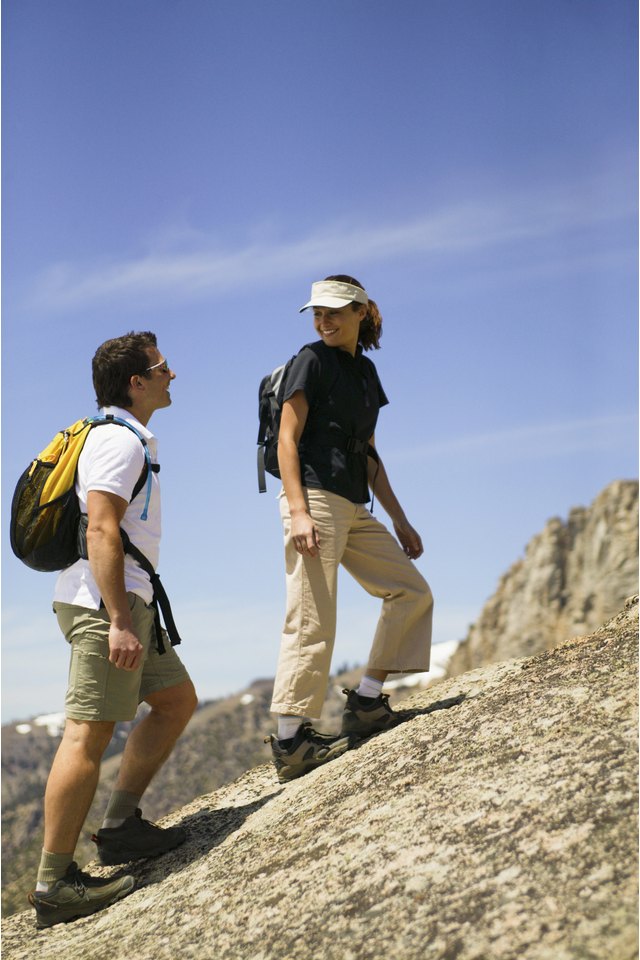Do You Burn More Calories Walking Uphill Rather Than on Flat Ground?

Walking uphill causes you to breathe harder, upping your heart rate. Not only will you burn more calories walking uphill instead of on a flat surface, you'll also tone your legs and buttocks. Since the added incline is more stressful on your body, warm up and cool down, and wear supportive shoes to minimize risk of injury.
Calories Burned on a Flat Surface
The number of calories you burn on a flat surface depends on your pace and how long you walk, as well as your weight. Walking about 30 minutes per mile burns more than 200 calories if you weigh 160 pounds. At a weight of 200 pounds, you'll burn around 250 calories, and going the same pace at 240 pounds burns more than 300 calories per hour. Picking up your pace to a 17-minute mile burns approximately 315 calories per hour at a weight of 160 pounds. If you weigh closer to 200 pounds, you'll burn nearly 400 calories per hour; if you weigh 240 pounds, about 470 calories per hour.
Uphill Calories Burned
Climbing a steep hill in your neighborhood or hiking up a trail makes you burn off even more calories. In one hour, you'll burn up to 440 calories going uphill at a weight of 160 pounds. If you weigh 200, you use up as much as 550 calories in the same time. At 240 pounds, you'll burn more than 650 calories in an hour by going uphill.
Additional Benefits
For every 1 percent increase in incline, you exert up to 4 percent more energy, explains personal trainer Davey Wavey. Your caloric expenditure goes up, as well as the use of even more muscle groups. Whether you increase the incline on your treadmill or walk up an outdoor hill, lean into the hill to work your calf muscles and keep your balance. You may not be aware, but you're also using your buttocks, inner and outer thigh muscles and your hip flexors. Over time, these areas become more toned and tightened.
Other Considerations
Warm up thoroughly before tackling that hill. Walk around the block briskly for about 10 minutes to elevate your heart rate and get blood flowing through your muscles. Include some leg stretches in your warmup after you get your heart rate up. After you exercise, stretch out thoroughly, focusing on your lower back, hips, inner thighs, outer thighs, calves and ankles. Thorough stretching gets blood to muscles, helping them strengthen and repair for your next workout.
References
Resources
Writer Bio
Melodie Anne Coffman specializes in overall wellness, with particular interests in women's health and personal defense. She holds a master's degree in food science and human nutrition and is a certified instructor through the NRA. Coffman is pursuing her personal trainer certification in 2015.
